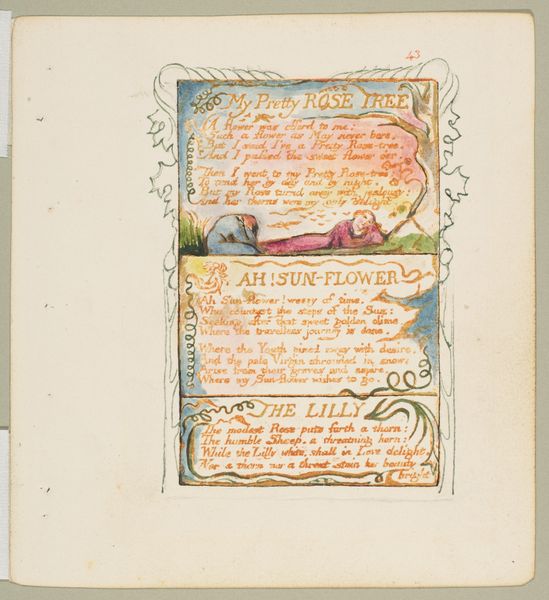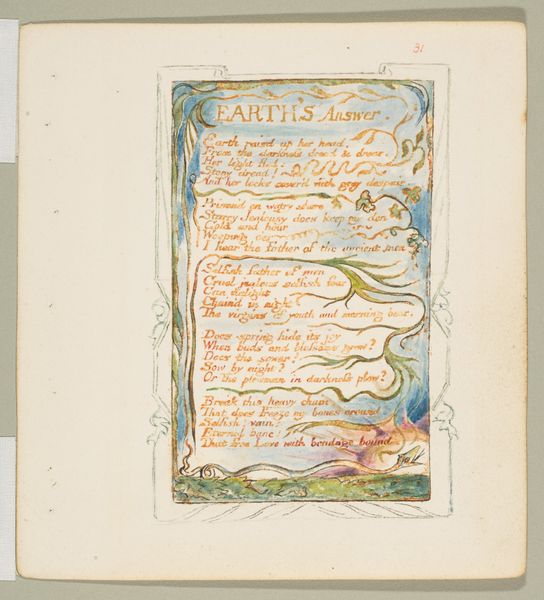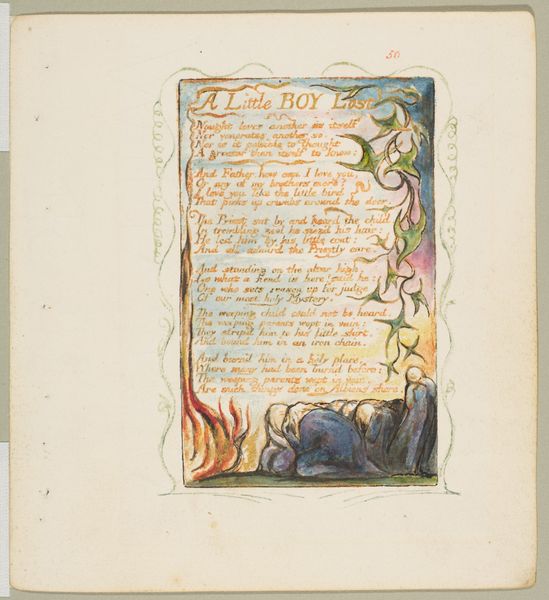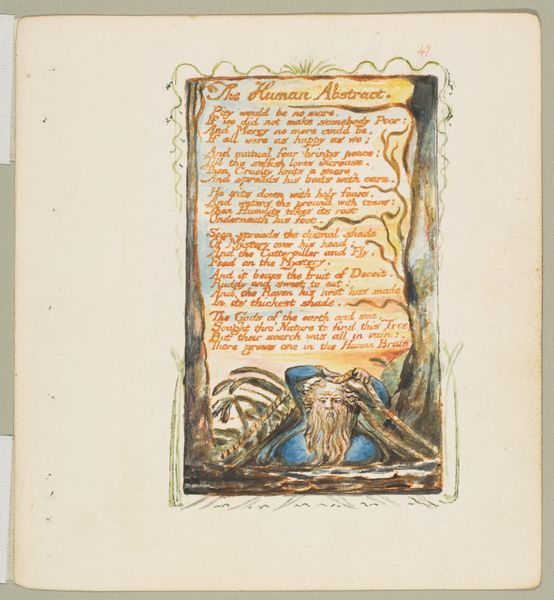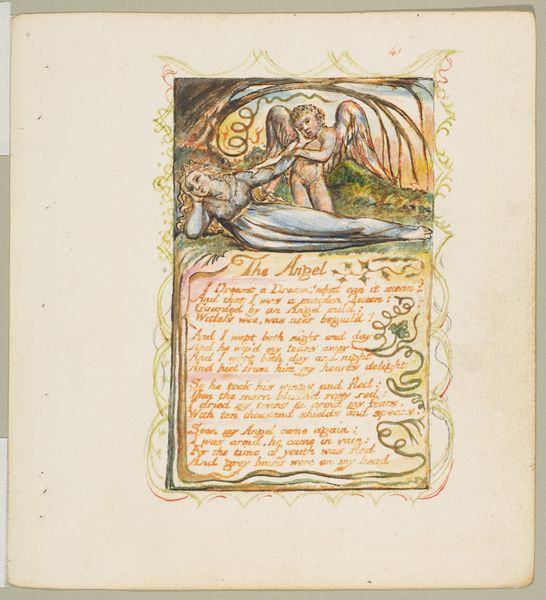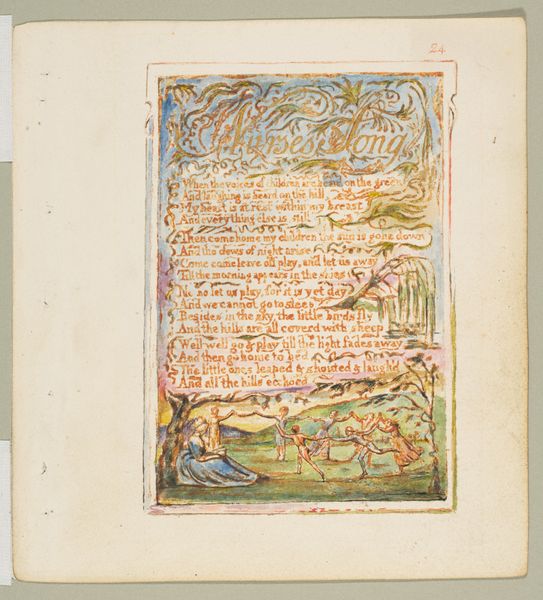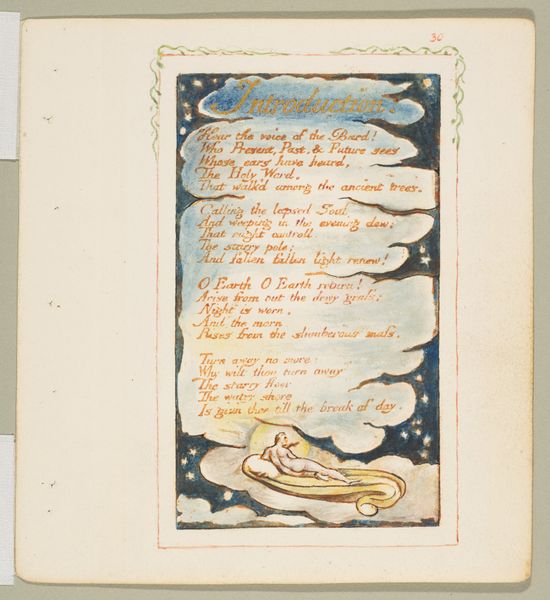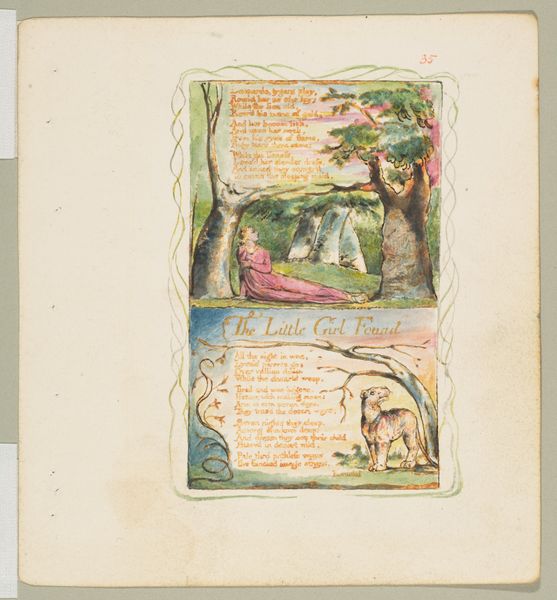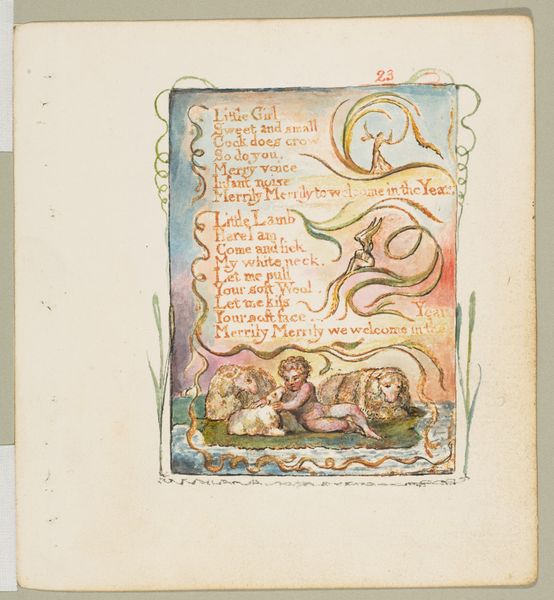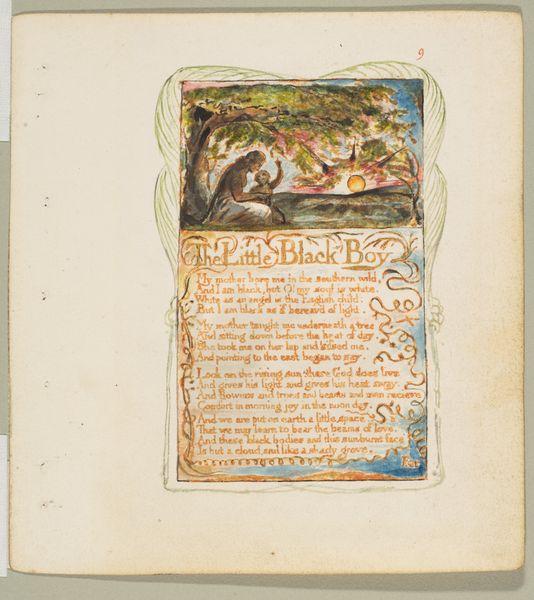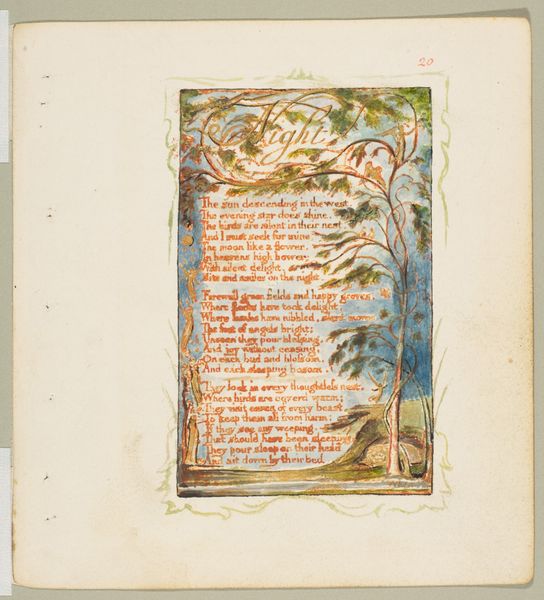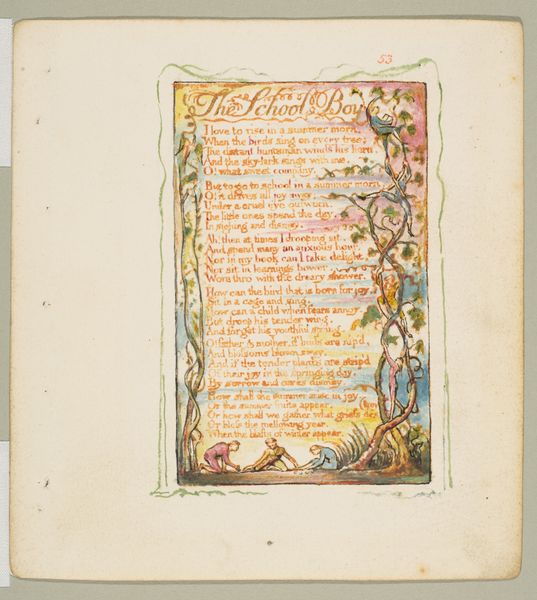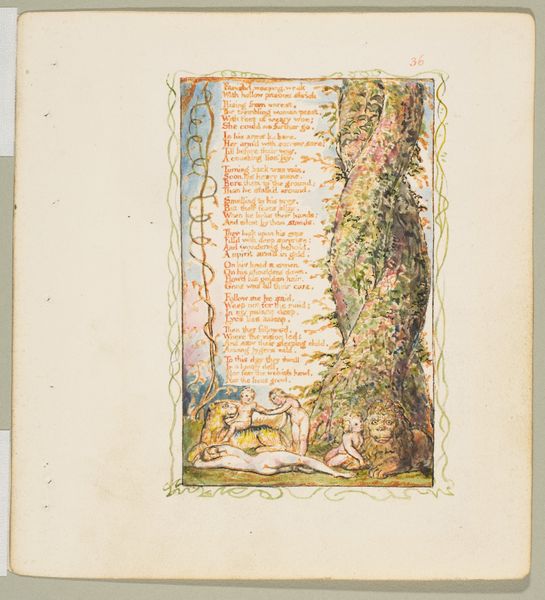
Dimensions: sheet: 6 3/16 x 5 9/16 in. (15.7 x 14.1 cm)
Copyright: Public Domain
Curator: Let's turn our attention to William Blake's "Songs of Experience: A Little Girl Lost," created between 1794 and 1825. Blake employed watercolor and coloured pencil to illuminate this print. Editor: The swirling colors and delicate lines give it a dreamy, unsettling quality, doesn't it? It's small, miniature even, but packed with…unease. You immediately sense that something is not right in this idyllic scene. Curator: Absolutely. Blake’s work often grapples with the societal constraints, especially concerning childhood and sexuality, within the broader political and moral landscape of his time. This piece specifically challenges the repressive attitudes toward female sexuality. Editor: Focusing on the physical production, the layers of watercolor seem built to give the impression of faded glory, and there's this repetitive imagery – a continuous circular motif surrounding the text—is this reflecting a world that feeds on itself? A self-destructive production cycle. Curator: That's a fascinating interpretation. Considering the poem itself, the illuminated text underscores the contradiction between innocence and experience, particularly the societal "crime" of innocent love. We can link it to the era's oppressive social structures governing morality and women's rights. The “Lost” aspect speaks to women losing their innocence at a very early age under these standards. Editor: The colored pencil lines surrounding the whole picture almost appear to cage the figures inside. It points toward a real material struggle, the artist's hand meticulously pressing, adding shade, creating the final form – this level of work tells of a societal cost that impacts its inhabitants in several forms. Curator: Precisely, Blake was deeply critical of the power structures shaping individual lives and, from a feminist theory perspective, critiqued patriarchal constructs. He sought to expose and dismantle them through his art and poetry, often blending both forms, like here, to really confront these injustices. Editor: Yes. And Blake didn’t produce on an assembly line. "A Little Girl Lost" highlights the labour-intensive work in creating it, emphasizing each book as a handcrafted artifact with inherent value which allows us to re-evaluate labour as an expression, but simultaneously making this print only available to elite individuals who could spend significant money acquiring art like this. Curator: Considering these nuances and contradictions in this specific miniature from "Songs of Experience" has unveiled both a broader scope into artistic practice, as well as an eye into social injustices— Editor: Absolutely! Thinking about "A Little Girl Lost", with attention on materials, has offered a way for seeing value as a complex entanglement of the hand-made, market values and moral dimensions.
Comments
No comments
Be the first to comment and join the conversation on the ultimate creative platform.
